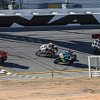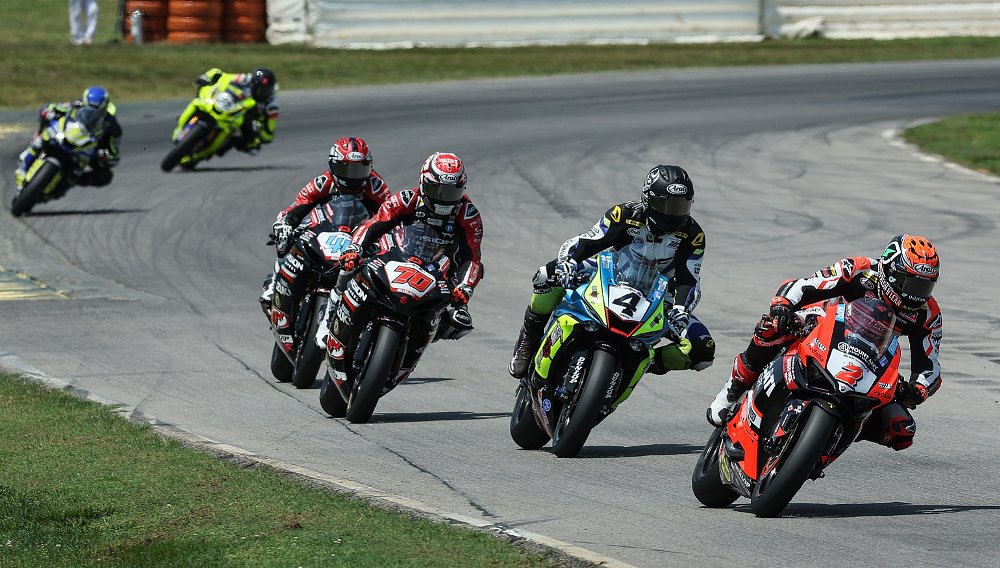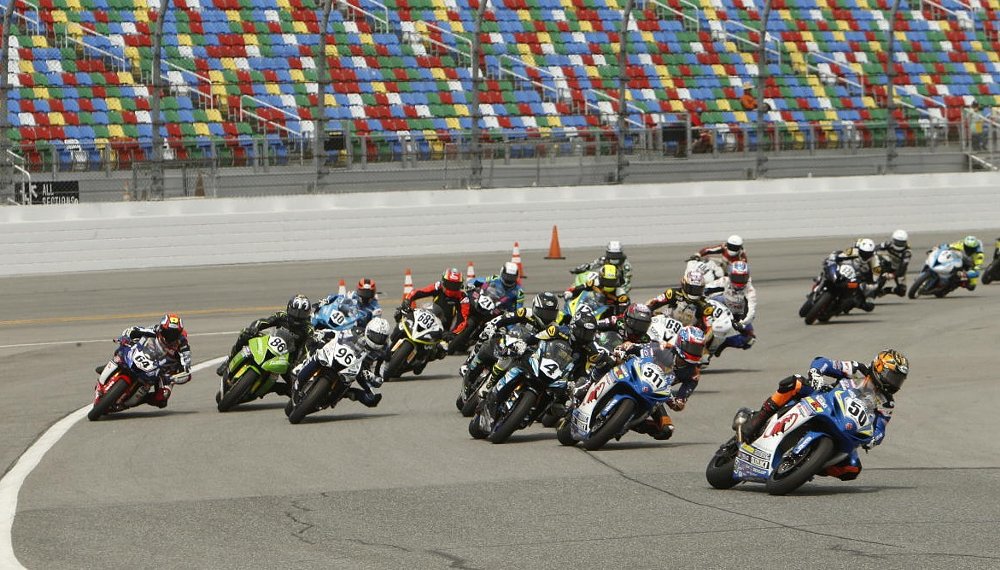Josh Herrin won the 81st Daytona 200 this weekend, 13 years after the first time he won the spring race, 0.07 seconds ahead Josh Hayes in a classic Daytona draft pass at the finish line, in a wild finish that saw the day of racing extend to become the Daytona 217.62. But the most critical moment of the race came earlier, when Herrin and Richie Escalante touched, sending Escalante to the ground and ending what appeared to be a two-way fight for the win.
Was it an aggressive but clean pass with no one to blame? Or did Herrin cross the line? Even the two former professional racers paid to analyze the race, Jason Pridmore on the television broadcast team and Roger Hayden on the MotoAmericaLive+ streaming service and the track public address, were ambivalent, hesitant to support either rider's side fully. Most fans seemed to take Herrin's side, saying it was just a racing incident.
You can watch the video below and decide for yourself. But before that, let's set the scene.
Herrin, the 2022 MotoAmerica Supersport champion, qualified on pole on his Warhorse HSBK Racing Ducati NYC Panigale V2. Typical Daytona racing took place early in the race, with eight riders in the lead group as no one could break away from the pack due to the importance of the draft on the high banks, where the Supersport bikes were hitting speeds around 180 mph.
After incidents and pit stops had whittled down the lead group, it appeared to be a two-way battle for the win between Herrin and Mission M4 ECSTAR Suzuki rider Escalante, on a GSX-R750, with Squid Hunter Racing's Josh Hayes in third on a Yamaha YZF-R6, but having lost the draft.
With less than 10 laps to go in the scheduled 57-lap race, Herrin attempted to pass Escalante on the inside going into turn one, a tricky turn coming off the banking. The two touched and Escalante went down, ending his race. Was it a fair pass? You could see it both ways.
The Herrin argument: When the two touched, Herrin was already past Escalante. It was the rear part of Herrin's bike that made contact with the front of Escalante's Suzuki. As Herrin said after the race, "As far as I was concerned, I was there and had the line."
The Escalante argument: When the contact happened, Escalante was already standing up his bike to try to avoid contact and they touched anyway. It was another overly aggressive pass from Herrin, which is something that's been seen before on the MotoAmerica circuit.
Questionable move or just a racing incident? Watch this clip and decide for yourself.
With Escalante out, Herrin had a big lead and seemingly an easy ride to the win. But a red flag on lap 52 changed that after two riders back in the field crashed out.
Daytona 200 rules say the race must run at least 53 laps to be complete, and if it's restarted it must run at least 10 more laps, so the race eventually ran 62 laps instead of 57. Meanwhile, officials decided to penalize Herrin six grid spots on the restart because of the contact with Escalante. Given the nature of Daytona, however, that wasn't much of a penalty in reality. The 200 turned into a 10-lap sprint race with an eight-rider pack bunched up at the front and no one able to break away.
Hayes led off the chicane for the run on the banking to the finish line, but everyone knows the lead is the worst place to be. Herrin drafted past for the win, with the top five riders all finishing within half a second.
The odd rules of the Daytona 200 created a bizarre end to an unusual race. Hayes finished second. Attack Performance Yamaha's Cameron Petersen had been one lap down, due to clutch problems early in the race and having to make three pit stops, to everyone else's two, but the 200's rules put everyone who qualifies for the post-red-flag "second race" back on the lead lap. So in the end Petersen finished third, officially. Hayden Gillim and P.J. Jacobsen finished fourth and fifth, even though they both crashed during the race.
If you missed the race, you can see all the highlights in this MotoAmerica video below or watch the full race on YouTube.









